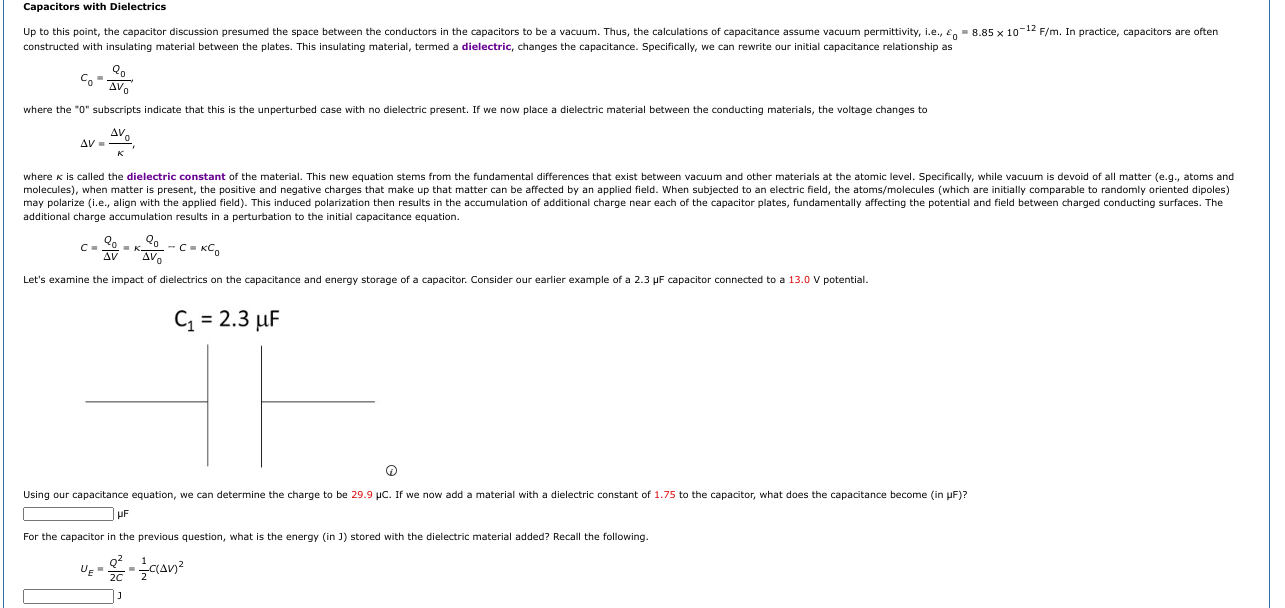Answered step by step
Verified Expert Solution
Question
1 Approved Answer
Capacitors with Dielectrics -12 Up to this point, the capacitor discussion presumed the space between the conductors in the capacitors to be a vacuum.

Capacitors with Dielectrics -12 Up to this point, the capacitor discussion presumed the space between the conductors in the capacitors to be a vacuum. Thus, the calculations of capacitance assume vacuum permittivity, i.e., 8.85 x 10 F/m. In practice, capacitors are often constructed with insulating material between the plates. This insulating material, termed a dielectric, changes the capacitance. Specifically, we can rewrite our initial capacitance relationship as Q AV where the "0" subscripts indicate that this is the unperturbed case with no dielectric present. If we now place a dielectric material between the conducting materials, the voltage changes to AV- where x is called the dielectric constant of the material. This new equation stems from the fundamental differences that exist between vacuum and other materials at the atomic level. Specifically, while vacuum is devoid of all matter (e.g., atoms and molecules), when matter is present, the positive and negative charges that make up that matter can be affected by an applied field. When subjected to an electric field, the atoms/molecules (which are initially comparable to randomly oriented dipoles) may polarize (i.e., align with the applied field). This induced polarization then results in the accumulation of additional charge near each of the capacitor plates, fundamentally affecting the potential and field between charged conducting surfaces. The additional charge accumulation results in a perturbation to the initial capacitance equation. C= -C = KC AV Let's examine the impact of dielectrics on the capacitance and energy storage of a capacitor. Consider our earlier example of a 2.3 F capacitor connected to a 13.0 V potential. C = 2.3 F Using our capacitance equation, we can determine the charge to be 29.9 c. If we now add a material with a dielectric constant of 1.75 to the capacitor, what does the capacitance become (in F)? HF For the capacitor in the previous question, what is the energy (in ]) stored with the dielectric material added? Recall the following. Q UE 2C -
Step by Step Solution
There are 3 Steps involved in it
Step: 1

Get Instant Access to Expert-Tailored Solutions
See step-by-step solutions with expert insights and AI powered tools for academic success
Step: 2

Step: 3

Ace Your Homework with AI
Get the answers you need in no time with our AI-driven, step-by-step assistance
Get Started


